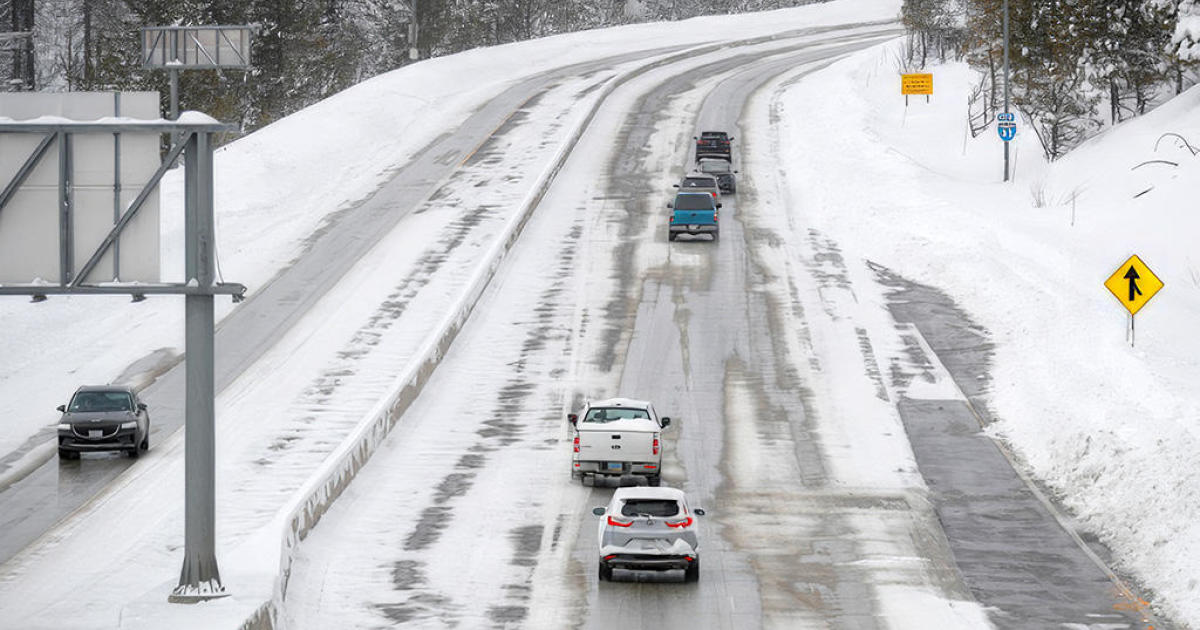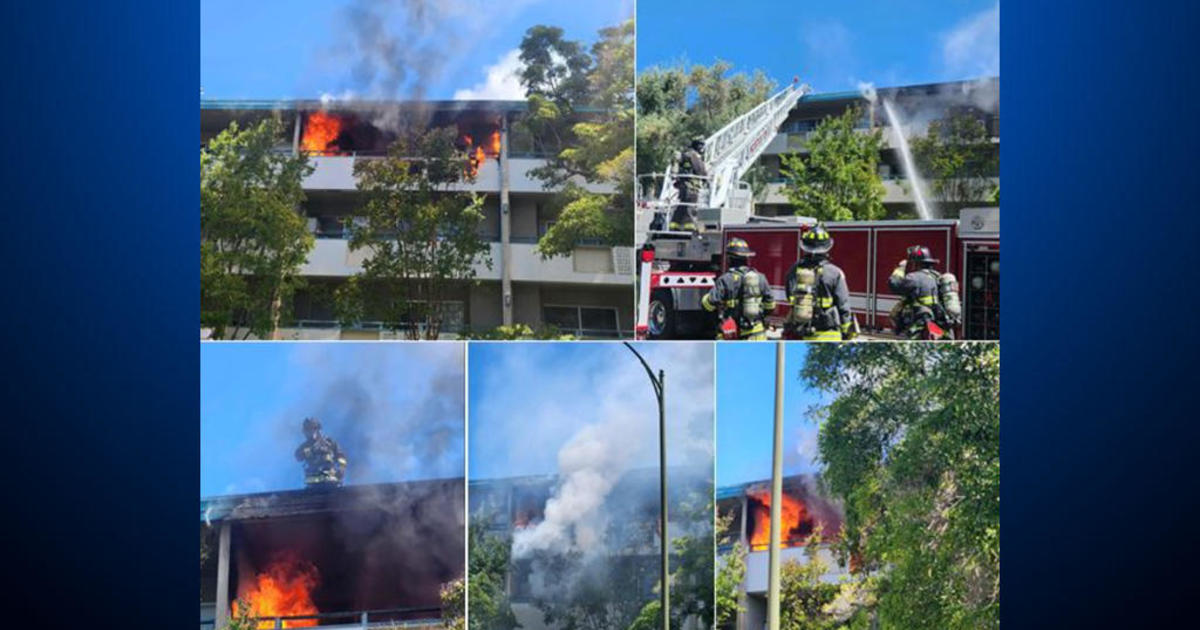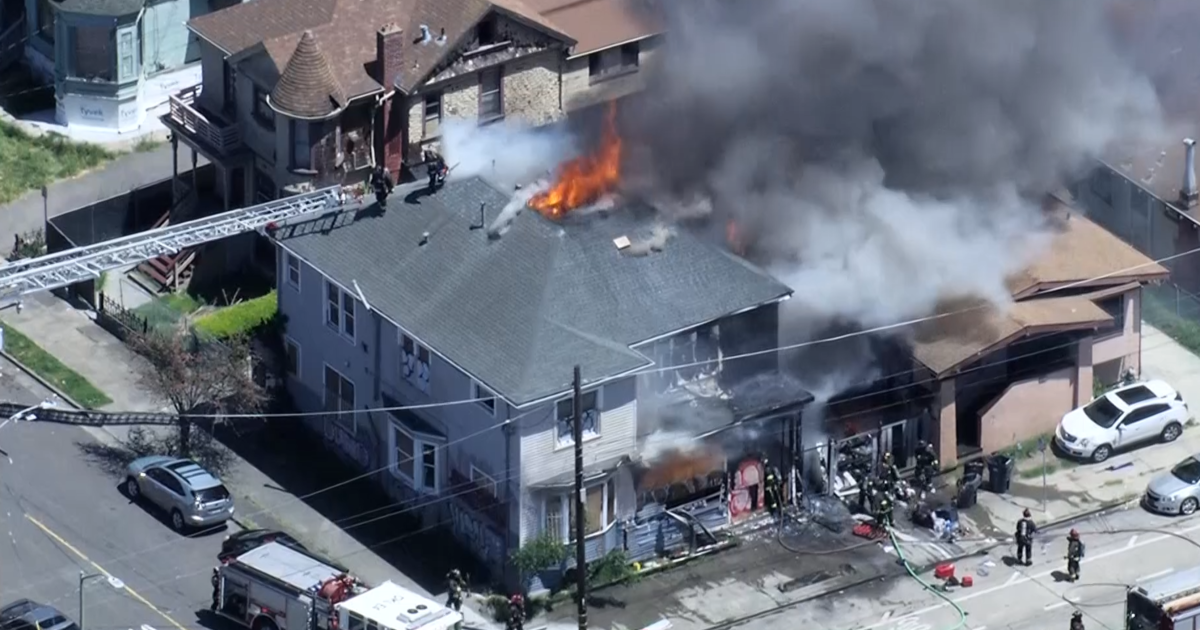Scientists Find Causes Behind Redding 'Firenado' During Carr Fire
RENO, Nev. (CBS SF) – A University of Nevada, Reno scientist has published a paper documenting the factors that fueled the destructive "firenado" that swept through Redding during the Carr Fire.
The catastrophic fire-generated vortex -- also commonly referred to as a fire whirl or fire tornado -- was created by the massive stream of rising and spinning smoke, ash and fire on July 26, 2018 between 7:30 p.m and 8 p.m. The firenado topped out at 17,000 feet above the Earth's surface as it scorched through a widespread area of Redding, devastating everything in its path. It was related to four deaths, a number of injuries and the destruction of many homes.
The vortex -- an infrequently observed atmospheric phenomena -- was spinning with the power of a class three tornado, according to the study by University of Nevada, Reno atmospheric scientist Neil Lareau, an assistant professor in the Physics Department at the college.
The research article, "The Carr Fire Vortex: A Case of Pyrotornadogenesis?" was published last month in the American Geophysical Union's scientific journal Geophysical Research Letters.
The paper documented the rare firenado and found several factors that merged during the Carr Fire at precisely the right place and time to create the destructive vortex. The observations made in the paper may help forecasters and scientists identify the kind of conditions that can create future fire tornadoes, potentially allowing experts to warn residents in the area of a fire when those conditions are present.
ALSO READ:
- 143 MPH Fire Tornado Ripped Through Redding During Carr Fire
- Carr Fire's Erratic Winds Whip Up Fire Tornados
"This paints a clear picture of the sequence of events leading to the vortex development and intensification," Lareau said in a press release provided by the University. "This sequence suggests the Carr Fire vortex may qualify as pyro-genetic tornado, and not merely a tornado-strength fire-generated vortex."
According to Lareau's study, satellite and radar observations documented the evolution of the vortex which revealed similarities to tornado dynamics.
"A key factor in the vortex formation was the development of a fire-generated ice-topped cloud -- known as a pyro-cumulonimbus -- which reached as high as 39,000 feet," according to the press release.
The release goes on to say that the development of the cloud helped stretch the underlying column of air, concentrating the rotation near the surface and whipping up tornado strength winds that were estimated at 143 mph, the strength of an EF-3 tornado.
"Radar data show that the vortex formed along the fire perimeter and within a pre-existing region of wind shear immediately following rapid vertical development of the convective plume, which grew from four to eight miles high in just 15 minutes," according to the study. "The plume development was fueled by the onset of the pyro-cumulonimbus cloud, a process similar to the development of an ordinary thunderstorm."
Lareau's study drew on data from National Weather Service NEXRAD radars located at Beale Air Force Base and Eureka in Northern California as well as Medford in Oregon.
According to the study, the other factors contributing to the firenado included:
- Exceptionally low fuel moisture due to unusual warmth throughout July.
- Climate impacts of a five-year drought followed by a near record wet season that produced an abundance of vegetation, then another exceptionally dry winter
- A near-surface cyclonic wind shear zone that developed in the hour prior to vortex formation
- The release of moist instability in the fire-generated cloud aloft
- Weather factors including very low humidity, record high temperatures, and terrain-channeled winds due to low atmospheric pressure.
"With the impacts from this fire, a discussion and studies are warranted about the potential to warn for future tornado-strength vortices," said Lareau. "In this case, the availability of high resolution radar and satellite observations provide advance indications for vortex formation such that watches, or even warnings, may have been possible."
Co-authors of the article are Nicholas Nausler of the NOAA/NWS/NCEP Storm Prediction Center in Norman, Oklahoma and John Abatzoglou from the Department of Geography at University of Idaho in Moscow, Idaho.
The Carr Fire burned 230,000 acres in Shasta and Trinity Counties over the course of five weeks after starting on July 23. The Carr fire left eight people dead and destroyed over 1,000 residences.
The fire was finally contained on August 30. It is the seventh largest fire in California history.



